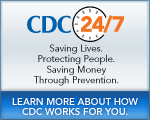Adverse Events After Receipt of Live, Attenuated Influenza Vaccine (LAIV)
Influenza Prevention and Control Recommendations
Published for the 2010-11 Influenza Season; Adapted for the 2012-13 Influenza Season
Healthy Children Aged 2—18 Years
In a subset of healthy children aged 60--71 months from one clinical trial, certain signs and symptoms were reported more often after the first dose among live-attenuated influenza vaccine (LAIV) recipients (n = 214) than among placebo recipients (n = 95), including runny nose (48% and 44%, respectively); headache (18% and 12%, respectively); vomiting (5% and 3%, respectively); and myalgias (6% and 4%, respectively). However, these differences were not statistically significant. In other trials, signs and symptoms reported after LAIV administration have included runny nose or nasal congestion (20%--75%), headache (2%--46%), fever (0--26%), vomiting (3%--13%), abdominal pain (2%), and myalgias (0--21%). These symptoms were associated more often with the first dose and were self-limited. A placebo-controlled trial in 9,689 children aged 1--17 years assessed prespecified medically attended outcomes during the 42 days after vaccination. Following more than 1,500 statistical analyses in the 42 days after LAIV, elevated risks that were assessed to be biologically plausible were observed for asthma, upper respiratory infection, musculoskeletal pain, otitis media with effusion, and adenitis/adenopathy. The increased risk for wheezing events after LAIV was observed among children aged 18--35 months (RR: 4.06; 90% CI = 1.3--17.9). Of the 16 children with asthma-related events in this study, seven had a history of asthma on the basis of subsequent medical record review. None required hospitalization, and elevated risks for asthma were not observed in other age groups. In this study, the rate of serious adverse events was 0.2% in LAIV and placebo recipients; none of the serious adverse events was judged to be related to the vaccine by the study investigators.
In a randomized trial, LAIV and trivalent inactivated influenza vaccine (TIV) were compared among children aged 6--59 months. Children with medically diagnosed or treated wheezing within 42 days before enrollment or with a history of severe asthma were excluded from this prelicensure study. Among children aged 24--59 months who received LAIV, the rate of medically significant wheezing, using a prespecified definition, was not greater compared with those who received TIV. Wheezing was observed more frequently among younger LAIV recipients aged 6--23 months in this study; LAIV is not licensed for this age group.
Another study was conducted among more than 11,000 children aged 18 months--18 years in which 18,780 doses of vaccine were administered over 4 years. For children aged 18 months--4 years, no increase was reported in asthma visits 0--15 days after vaccination compared with the prevaccination period. A significant increase in asthma events was reported 15--42 days after vaccination, but only in vaccine year 1. A 4-year, open-label field trial study assessed LAIV safety of more than 2,000 doses administered to children aged 18 months--18 years with a history of intermittent wheeze who were otherwise healthy. Among these children, no increased risk was reported for medically attended acute respiratory illnesses, including acute asthma exacerbation, during the 0--14 or 0--42 days after LAIV compared with the pre- and postvaccination reference periods.
Initial data from Vaccine Adverse Event Rerpoting System (VAERS) during 2007--2008 and 2008--2009, following ACIP’s recommendation for use of LAIV in healthy children aged 2--4 years, did not demonstrate an increased frequency of wheezing after administration of LAIV. However, data also indicate that uptake of LAIV among children aged 2--4 years was limited. Safety monitoring for wheezing events after LAIV is ongoing.
Adults Aged Younger than 50 Years
Among adults, runny nose or nasal congestion (28%--78%), headache (16%--44%), and sore throat (15%--27%) have been reported more often among vaccine recipients than placebo recipients. In one clinical trial among a subset of healthy adults aged 18--49 years, signs and symptoms reported significantly more often (p less than 0.05) among LAIV recipients (n = 2,548) than placebo recipients (n = 1,290) within 7 days after each dose included cough (14% and 11%, respectively), runny nose (45% and 27%, respectively), sore throat (28% and 17%, respectively), chills (9% and 6%, respectively), and tiredness/weakness (26% and 22%, respectively). A review of 460 reports to VAERS after distribution of approximately 2.5 million doses during the 2003--04 and 2004--05 influenza seasons did not indicate any new safety concerns. Few of the LAIV VAERS reports (9%) were serious adverse events; respiratory events (47%) were the most common conditions reported.
Persons at Higher Risk from Influenza-Related Complications
Limited data assessing the safety of LAIV use for certain groups at higher risk for influenza-related complications are available. In one study of 54 HIV-infected persons aged 18--58 years with CD4+ counts 200 or more cells/mm3 who received LAIV, no serious adverse events were reported during a 1-month follow-up period. Similarly, one study demonstrated no significant difference in the frequency of adverse events or viral shedding among HIV-infected children aged 1--8 years on effective antiretroviral therapy who were administered LAIV compared with HIV-uninfected children receiving LAIV. LAIV was well-tolerated among adults aged 65 years and older with chronic medical conditions. These findings suggest that persons at risk for influenza complications who have inadvertent exposure to LAIV would not have significant adverse events or prolonged viral shedding and that persons who have contact with persons at higher risk for influenza-related complications may receive LAIV.
Contact Us:
- Centers for Disease Control and Prevention
1600 Clifton Rd
Atlanta, GA 30333 - 800-CDC-INFO
(800-232-4636)
TTY: (888) 232-6348 - Contact CDC-INFO



